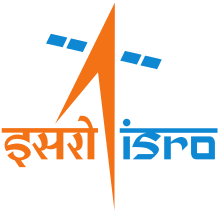Lunar Polar Exploration Mission
The Lunar Polar Exploration Mission is a robotic lunar mission concept by Indian Space Research Organisation (ISRO) and Japan Aerospace Exploration Agency (JAXA)[7][8] that would send a lunar rover and lander to explore the south pole region of the Moon in 2024.[1][2][6] JAXA is likely to provide the under-development H3 launch vehicle and the rover, while ISRO would be responsible for the lander.[8][9]
| Names | Lunar Polar Exploration[1][2] |
|---|---|
| Mission type | Lunar lander, rover |
| Operator | ISRO / JAXA |
| Website | www |
| Mission duration | 6 months (planned)[3] |
| Spacecraft properties | |
| Manufacturer | Lander: ISRO Launcher and rover: JAXA |
| Launch mass | ≈6,000 kg (13,000 lb) [4] |
| Landing mass | |
| Dry mass | |
| Payload mass | ≈350 kg (770 lb) [5] |
| Dimensions | |
| Start of mission | |
| Launch date | Suggested: 2024[1][2] |
| Rocket | H3[6] |
| Launch site | LA-Y, Tanegashima |
| Contractor | Mitsubishi Heavy Industries |
| Moon lander | |
| Spacecraft component | Rover |
| Landing site | South polar region |
| Moon rover | |
The mission concept has not yet been formally proposed for funding and planning.[10]
In November 2019, ISRO officials stated that a new lunar lander mission was being studied for launch in November 2020; this new proposal is called Chandrayaan-3 and it would be performed by ISRO alone as a repeat attempt to demonstrate the landing capabilities needed for the Lunar Polar Exploration Mission proposed in partnership with Japan in 2024.[11]
Overview
The Lunar Polar Exploration Mission would demonstrate new surface exploration technologies related to vehicular transport and lunar night survival for sustainable lunar exploration in polar regions.[12][9] For precision landing it would utilize a feature matching algorithm and navigational equipment derived from JAXA's SLIM mission.[4][13] The lander's payload capacity would be 350 kg (770 lb) at minimum.[5][3][14] The rover would carry multiple instruments by JAXA and ISRO including a drill to collect sub-surface samples from 1.5 m (4.9 ft) depth.[15][3] Water prospecting and analysis are likely to be mission objectives.[8][16] Payload proposals from other space agencies might be sought.[7][13]
On 24 September 2019, in a joint statement by JAXA and NASA discussed possibility of NASA's participation as well.[17]
See also
- Chandrayaan Programme
- In-situ resource utilization
- Lunar resources
- Lunar water
- VIPER (rover)
References
- After Mars, ISRO to Set a Date with Venus. Trak. Malvika Gurung. 20 May 2019.
- After Reaching Mars, India's Date With Venus In 2023 Confirmed, Says ISRO. U. Tejonmayam, India Times. 18 May 2019.
- "国際協力による月探査計画への参画に向けて参考資料" (PDF). MEXT.jp. 29 August 2019. p. 21. Archived (PDF) from the original on 14 October 2019. Retrieved 14 October 2019.
- "月離着陸実証(HERACLES)ミッションの紹介 と検討状況" (PDF). 28 January 2019. p. 12. Archived (PDF) from the original on 15 November 2019. Retrieved 15 November 2019.
- Hoshino, Takeshi; Wakabayashi, Sachiko; Ohtake, Makiko; Karouji, Yuzuru; Hayashi, Takahiro; Morimoto, Hitoshi; Shiraishi, Hiroaki; Shimada, Takanobu; Hashimoto, Tatsuaki; Inoue, Hiroka; Hirasawa, Ryo (May 2020). "Lunar polar exploration mission for water prospection - JAXA's current status of joint study with ISRO". Acta Astronautica. 176: 52–58. doi:10.1016/j.actaastro.2020.05.054.
- Shimbun, The Yomiuri (2019-07-30). "Japan, India to team up in race to discover water on moon". The Japan News. Retrieved 2019-07-30.
- "India's next Moon shot will be bigger, in pact with Japan". The Times of India. 2019-07-07. Retrieved 2019-06-21.
For our next mission — Chandrayaan-3 — which will be accomplished in collaboration with JAXA (Japanese Space Agency), we will invite other countries too to participate with their payloads.
- "Episode 82: Jaxa and International Collaboration with Professor Fujimoto Masaki". AstrotalkUK. 2019-01-04. Retrieved 2019-06-21.
- Hoshino, Takeshi; Ohtake, Makiko; Karouji, Yuzuru; Shiraishi, Hiroaki (May 2019). "Current status of a Japanese lunar polar exploration mission". Archived from the original on 25 July 2019. Retrieved 25 July 2019.
- ISRO planning 7 interplanetary missions, Venus on the to-do list. Sidharth MP, DNA. 18 May 2019.
- https://thewire.in/space/isro-chandrayaan-3-lunar-lander-rover-gaganyaan ISRO Will Embark on Chandrayaan 3 by November 2020 for Another Landing Attempt. The Wire. 14 November 2019.
- Sasaki, Hiroshi (17 June 2019). "JAXA's Lunar Exploration Activities" (PDF). UNOOSA. p. 8. Retrieved 9 July 2019.
- NASA Exploration Science Forum 2019 - Masaki Fujimoto. Event occurs at 3 minute 6 seconds.
- "Objective and Configuration of a Planned Lunar Polar Exploration Mission" (PDF). 1 February 2020. Retrieved 5 February 2020.
- Spaceflight, Meghan Bartels 2019-10-23T13:00:22Z. "Japan Sets Sights on Moon with NASA and India". Space.com. Retrieved 2019-10-23.
- Six-day cruise lies ahead for India's Chandrayaan-2 probe before the real lunar shenanigans begin. Richard Speed, The Register. 14 August 2019.
- "JAXA | Joint Statement on Cooperation in Lunar Exploration". JAXA | Japan Aerospace Exploration Agency. Retrieved 2019-10-14.

